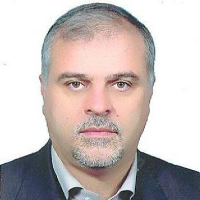From poverty to Weirdness; from wealth to power(Critical Discourse Analysis of the Story of Martha Albany by Gibran Khalil Gibran)
Today, some schools criticize contemporary literature search ways to check the structure of the text by relying on the text, thoughts, and ideologies dominating the author's mind. This attitude is because, in his view, there is not neutral text and but always influenced by environmental factors and social history in their society. In other words, there is always a two-way interaction between text and society, whose structural and systematic examination reveals data that is important not only in the analysis and critique of literary work but also is useful in the historical explanation of the time of creation. One of the new approaches in this field is Norman Furloughs’ model that means critical discourse analysis. Critical discourse is, in fact, a systematic approach whose basic principles are based on linguistic structure. In fact, Folkclub's aim is to unveil a structured way of criticizing to focus on the syntactic structure of the text's social context. The peculiarity of Ferrakoff's approach to others is that he places the text at the center of his attention and in the process of text production, he interprets the interaction between the author and the social structure. This exchange between textual content and society can be termed textual interaction, which is often overlooked in the conclusions of research and critique of texts, either forgotten or highly regarded. In examining these two-way interactions, two axes will be identified: ideology and power. Ferkloff believes, since every text is subject to the cultural, social, and political constraints and conditions in its society therefore, there is always a trace of dominant ideology in textual analysis and this process is because the production of a particular meaning or a social value undoubtedly carries the author's ideological motivations. In this study, it has been attempted to re-read the critical story of Marta Albany's short story by Gibran Khalil Gibran. In this way we can recreate the author's mind and the governing atmosphere as well as the environmental factors that influence the creation of the story. The main message of the story is based on a redefined model of a society based on class antagonism, and the author intended to reset its consequences. The ideology of compensation in this story is the depiction of scenes in which the meaningful confrontation of poverty and wealth and its devastating consequences is demonstrated. With regular vocabulary and clear insight, he has overtaken the morphological achievement of their self-made power. His vocabulary is the collective memory of a large part of the society of his time that undoubtedly has its own social identity, belonging to the realm of social norms and values. Finally, the achievement of compensation in this story and its social outlook can be regarded as historical and eternal. In this study, by relying on the structure of critical discourse we attempt to reread the role of two important factors in the author's mental cohesion, ideology and power. These two factors are among the factors that have always remained in the analysis of texts and finally answered the following questions, how has Khalil Gibran's compensation made sense by targeting syntactic structure? How can it be used to represent the conditions of society by relying on the Ferrakoff model, and given its syntactic structure, power, and ideology?
The present study is a descriptive-analytical and content analysis study; Theoretical foundations are based on Norman Farclaw's critical discourse. The paradigm has a linguistic structure that is based on three stages called description, interpretation, and explanation.Relying on the same triple paradigm is characteristic of his model over other schools,because relying on this approach can restore the widespread worldview in the text and then the power that the text seeks to expose. Finally, the researcher can represent the role of social factors in text creation that are usually overlooked in text analysis.
Critical discourse analysis as a newer approach to discourse analysis is a way of discovering literary worldviews, the result of which is always much closer to the truth. Whereas other schools of criticism in literature have concentrated on aspects such as aesthetics,psychology or the sociology of language and have achieved remarkable results; Ferkloff based his vision on a distinctive structure; A structure that is not only one-sided but also has different aspects of a work. In fact, his criticism of other schools is that their view is purely ontology, and this approach can only lead to an objective description of the text.The consequence of this approach for him is individualism in analysis because it focuses only on the people involved in their discourses and practices, and so the role of society and its transcendental structure (ideology-power), which have been instrumental in shaping discourse, will be completely ignored. According to this theory, the text has different levels that we need to analyze for each level. So when we look at the stages of critical discourse; we will note that the effort of this interdisciplinary knowledge is to obtain the linguistic factors necessary for analysis by creating horizontal cuts. That is, the researcher relied on this section to perform the descriptive phase then relying on the information of the description stage and creating vertical cuts has actually penetrated the depth of the text, this process means performing the interpretation phase. The result of this process is not only the discovery of macro-social meanings but also the detailed structure of the target community. Recognizing the social factors that have been instrumental in the creation of the text means performing the explanatory phase. It can be acknowledged by relying on the implementation of the three stages of Ferrakoff in the Martha Albany story, the literary style of compensation has played a significant role in drawing people's social truths into society. The main focus of the author is to combat the existing bipolar structure of wealth in the face of poverty. The data in the description section show that the story in terms of vocabulary does not have the same style and location but varies according to the status and position of the story; and by quoting the syntactic structure of the story it can be claimed that there is little satisfaction at all; the sentences are short, the nature of the accompanying and the words positive. But where the object of expression is objection, words are heavily weighted, negative meanings and the number of negative vocabulary are significantly higher than positive ones. The ideological outlook for the story is the cry for justice and the fight for norms and values that are hidden under the guise of wealth and that permit any holder of wealth to do so.
-
Comparison of Romantic illustrations by Nizar Qabbani and Simin Behbahani Using Childrens Traits and Moods
Vahid Sabzianpoor *, Abdolreza Naderfar, Elham Rezaei
Journal of Research in Comparative Literature, -
Fragments and tips
Vahid Sabzianpoor *, Maryam Bahrami
journal of The Workbook of Literary Texts in Iraqi Career, -
Examining the social Discourse of Women in the Novel Ra’eh Al-Word and Anoof La Tashm and This Street Has No Speed Bump (Analysis Based on Normal Farclaf’s Critical Discourse)
*, Vahid Sabzianpoor, Ali Salimi, Tooraj Zinivand
Journal of Research in Comparative Literature, -
Critical Discourse Analysis of the Story of Al-fogara by ehsan Abdul qodos (Reading Based on Norman fairclough's Critical Discourse)
*, Vahid Sabzianpor
Research in Narrative Literature,



